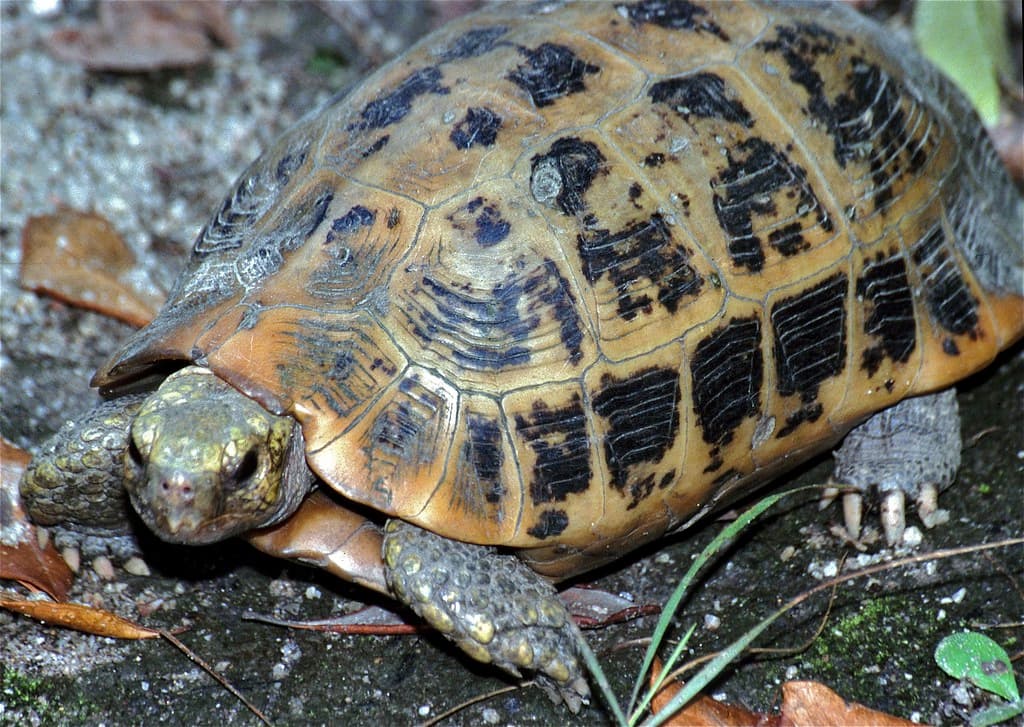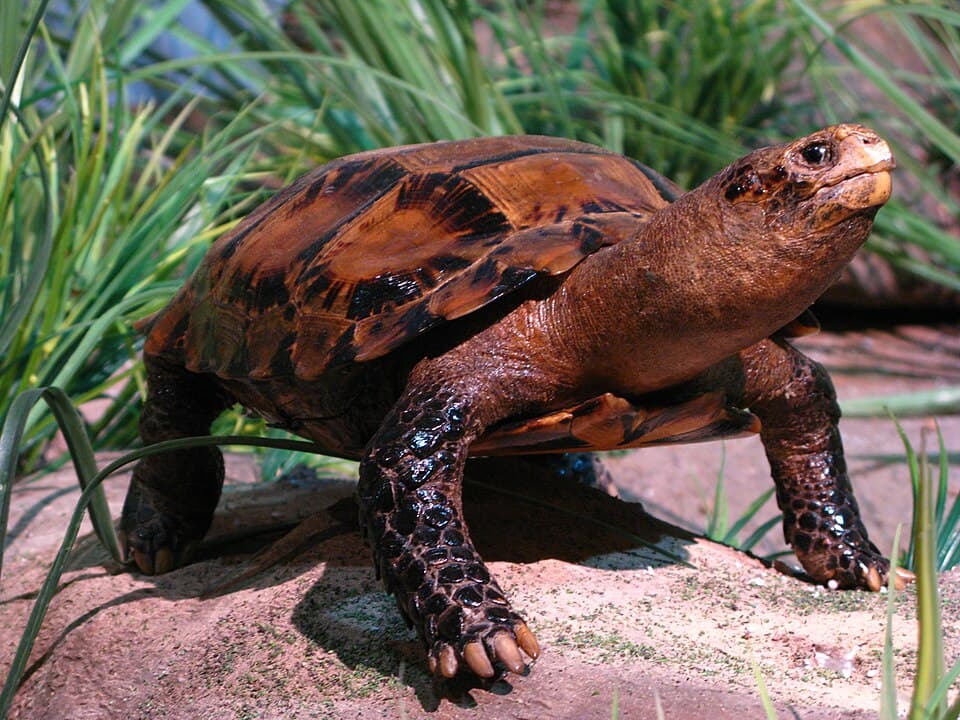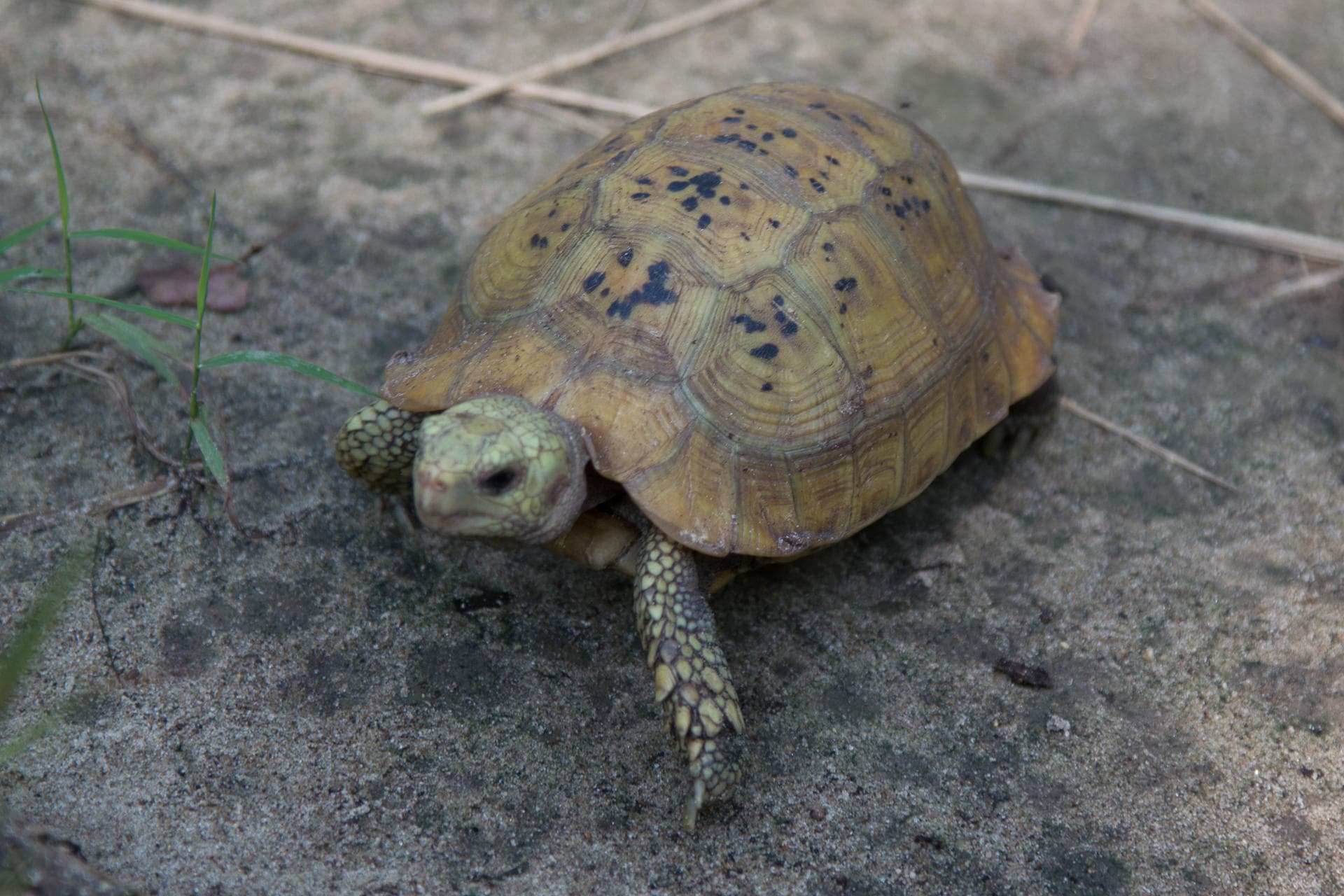Tortoises look like turtles, and the ones that live in Cambodia inhabit forests; we also call them “mountain turtles”. We have 2 tortoise species, and both of them are considered Vulnerable on the IUCN Red List. People hunt them for not only food but also shells for use in traditional medicine. Since not many people know about tortoises because our language only has two common words for tortoises and turtles. It could be a little confusing to identify which one is a tortoise or turtle. Let’s take a look at the 2 only tortoise species in Cambodia together with me below.
Elongated Tortoise (អណ្តើកព្រិច/អណ្តើកភ្នំ)

Elongated tortoise is a small mountain tortoise species that grows to only around 30 centimeters long and weighs 3.5 kilograms. Usually, females are wider and more rounded than males while males have larger tails than females. More than that, females have longer and more curved claws than males to help them with nest building. The carapace of an elongated tortoise is greenish-yellow to caramel, with blotches of black on each scute. This tortoise also has big scales on its face and limbs as well.
The distribution of this mountain tortoise is in China, South Asia, and Southeast Asia. They live in a variety of forest types including bamboo forests, dry deciduous forests, evergreen forests, secondary forests, and warm tropical forests. As for Cambodia, this terrestrial tortoise species inhabits forests, the Mekong Plains, and the Cardamom Mountains. They spend most of their time resting in piles of leaf litter, and they rarely bask. Most of their activities usually occur at dawn or dusk, and they are more active during the rainy season. Across their range, this terrestrial tortoise feeds on fallen fruits, flowers, fungi, leaves, mushrooms, and soft-shelled invertebrates.
Despite the wide range, this tortoise is a critically endangered species whose number severely declines every day. The major threat to their population is the mass harvesting for the large and growing food markets in China. Other threats that also affect them are habitat destruction and illegal collection for pet trade.
Impressed Tortoise (អណ្តើកមាស/អណ្តើកខ្នាយ)

Slightly larger than the previous one, impressed tortoises can grow up to 35 centimeters long; and females are larger than males. An impressed tortoise has a flattened shell with a strongly serrated edge. The carapace has dark scutes, and the front limbs of this tortoise have stiff and elongated scales. They got the name from the impressed or indented shape of their scutes. However, in Cambodia, the impressed tortoise in our language literally means golden tortoise due to the color of their shell.
This tortoise species occurs in mountainous forest areas in Southeast Asia, mostly in Cambodia, Laos, Malaysia, Myanmar, Thailand, and Vietnam. At the same time, they are also found in Northeast India and Southern China as well. Impressed tortoises live in bamboo forests, evergreen forests, moist hills, and montane forests. Not different from the elongated tortoise, this one also spends most of its time under leaves on the forest floor. As omnivores, impressed tortoises may also feed on bamboo shoots, grasses, and mushrooms as well as invertebrates.
The status of this reptile in the wild is uncertain but they are still facing threats that harm their number. Being considered as a rare species, they are facing poaching for meat (by local people), pet trade, and traditional medicine.
Related Post: Big-Headed Turtle Facts
